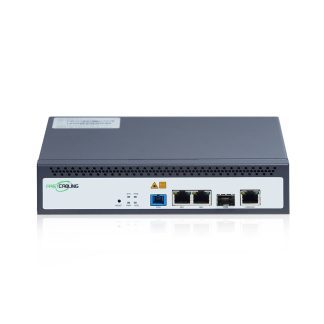As businesses increasingly rely on high-speed internet to power their operations, understanding the nuances between different fiber optic technologies becomes essential. Two prevalent technologies in this realm are Fiber Passive Optical Network (PON) and traditional point-to-point fiber. While both offer substantial benefits over legacy copper systems, each has unique characteristics that make it suitable for different applications. In this blog, we’ll delve into the key differences between Fiber PON and traditional fiber to help you make an informed decision for your business communication needs.
Table of Contents [hide]
What is Fiber PON?
Fiber PON (Passive Optical Network) is a type of fiber optic communication system that uses a single optical fiber to serve multiple endpoints without the need for electrically powered components between the source and the endpoints. This is achieved through passive splitters, which divide the optical signal to serve multiple users. PONs are commonly used in residential broadband, fiber to the home (FTTH), and business environments where multiple users can be served efficiently.

1 Port Gigabit PON (Passive Optical Network) OLT (Optical Line Terminal)
Advantages of Fiber PON:
- Cost-Effective Deployment: By using passive splitters, a single fiber strand can serve multiple users, reducing the amount of fiber and associated installation costs.
- Scalability: PONs can easily scale to accommodate additional users without significant infrastructure changes.
- Energy Efficiency: The absence of active components in the field reduces power consumption and maintenance needs.
Disadvantages of Fiber PON:
- Shared Bandwidth: Since multiple users share the same fiber, bandwidth is divided among them, which can lead to reduced performance during peak usage times.
- Limited Distance: The distance over which PON can effectively transmit data is typically shorter compared to point-to-point fiber systems.

PON Fiber Splitter 1-16
What is Traditional Fiber?
Traditional fiber, often referred to as point-to-point fiber, involves a direct fiber optic connection from the service provider’s central office to the end user. Each user has a dedicated fiber strand, ensuring a direct and uninterrupted link.
Advantages of Traditional Fiber:
- Dedicated Bandwidth: Each user has their own fiber strand, ensuring consistent and high-speed performance regardless of other users’ activities.
- Longer Distance: Traditional fiber systems can transmit data over longer distances without significant loss of signal quality, making them ideal for larger geographical areas.
- Higher Capacity: Point-to-point systems can support higher data rates, making them suitable for bandwidth-intensive applications.
Disadvantages of Traditional Fiber:
- Higher Cost: The need for dedicated fiber strands for each user increases the material and installation costs.
- Complex Deployment: Installing separate fibers for each endpoint can be more complex and time-consuming.
Choosing the Right Solution for Your Business
When deciding between Fiber PON and traditional fiber for your business, several factors need to be considered:
- Bandwidth Requirements: If your business demands high bandwidth
for applications such as video conferencing, large data transfers, or real-time data processing, traditional fiber may be the better choice due to its dedicated bandwidth and higher capacity.
- Number of Users: For businesses with numerous users in a concentrated area, Fiber PON can be more cost-effective and scalable. It allows multiple endpoints to be connected using fewer fibers, which can significantly reduce deployment costs.
- Geographical Spread: If your business is spread over a large area, traditional fiber’s ability to maintain signal quality over long distances can be advantageous. However, if your operations are more localized, the distance limitations of Fiber PON may not be a concern.
- Budget Considerations: Fiber PON can offer substantial savings on initial deployment and ongoing maintenance due to its passive nature and efficient use of infrastructure. Traditional fiber, while offering superior performance, typically requires a higher initial investment.
- Future Growth: Consider your business’s future growth potential. If you anticipate a significant increase in data demand, traditional fiber’s higher capacity and dedicated connections might better serve your long-term needs.
Conclusion
Both Fiber PON and traditional fiber optic technologies offer substantial benefits over older copper-based systems, providing faster, more reliable internet connections essential for modern business operations. Fiber PON excels in cost-efficiency and scalability, making it ideal for environments with multiple users and constrained budgets. Traditional fiber, on the other hand, provides unmatched performance with dedicated bandwidth and long-distance capabilities, suitable for high-demand applications and extensive geographic coverage.
At Business Communication Solutions (BCS), we understand the critical role that a reliable and high-performance network plays in your business’s success. Whether you’re considering Fiber PON or traditional fiber, our team of experts can help you assess your needs, plan your infrastructure, and implement a solution tailored to your specific requirements. Contact us today to learn more about how we can enhance your business communication with state-of-the-art fiber optic technology. 512.257.1433

